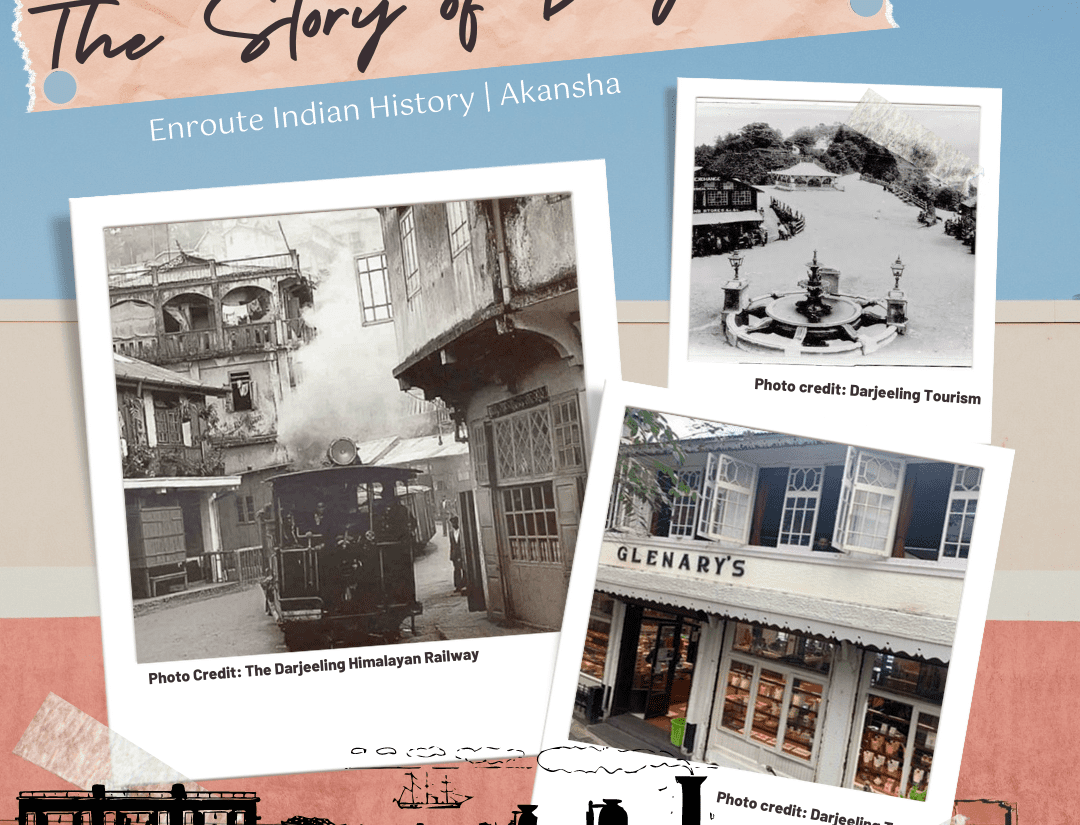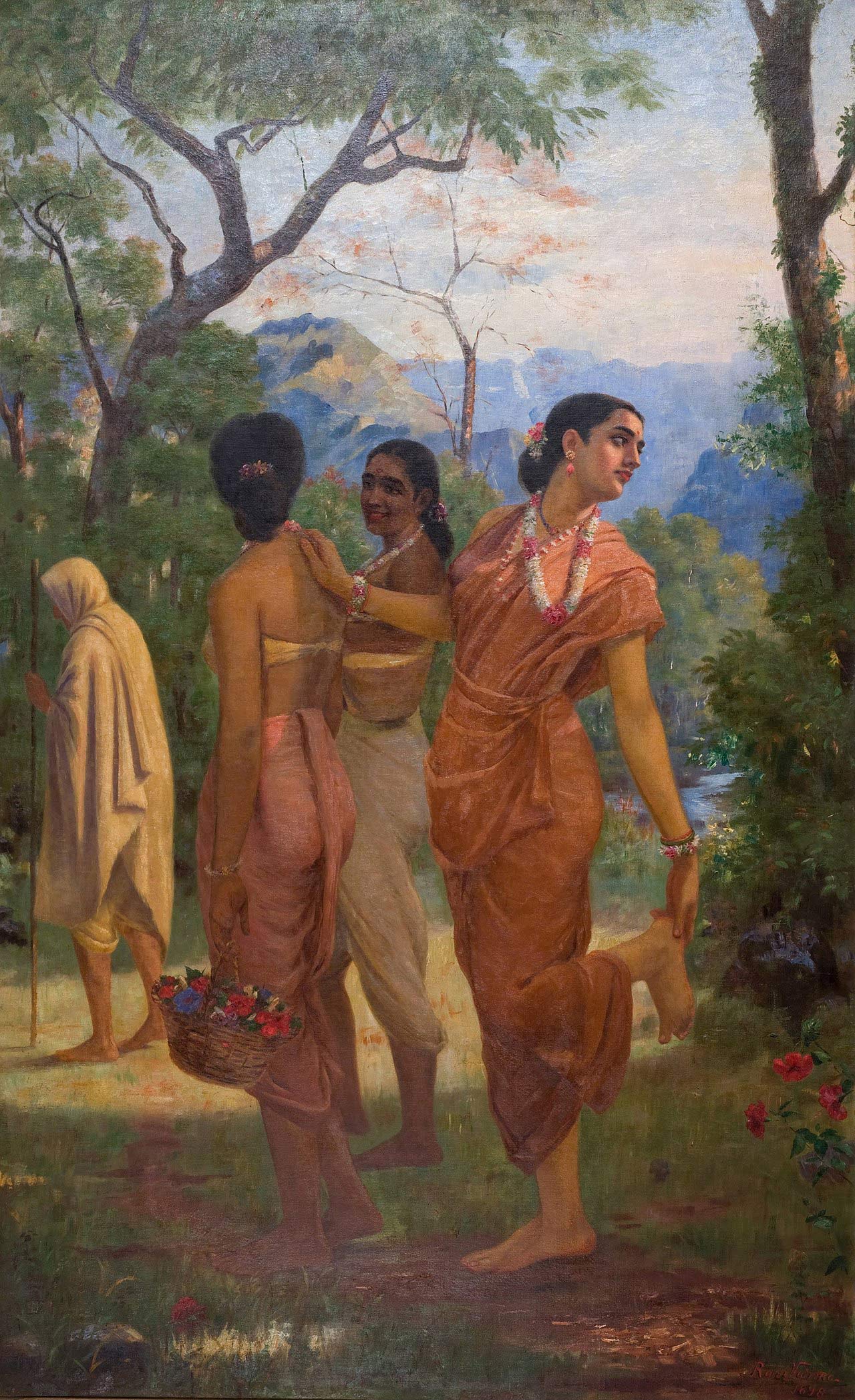
Article by EIH Researcher and Writer
Akansha Sengupta
Situated on the foothills of the Lesser Himalayas, Darjeeling is a small town with a diverse and multi-faceted history. The Himalayan town is dotted with emerald-green tea plantations and snow-covered peaks. The picturesque little town was the go-to destination for the British. Historically, the establishment of hill stations in colonial India was driven by the feeling of homesickness, as the English missed the cold climate back home. Today it is a bustling town, with a population of about 1.9 lakh people. It is one of the most scenic places in India, with the Kanchenjunga, the world’s third-highest peak serving as its backdrop. If you had to plan a visit to the queen of hills, this is how you should go about your trip.
A brief history of Darjeeling:
Before visiting a new place, knowing a little about its history always comes in handy. Darjeeling is perhaps one of the most cosmopolitan and diverse hill stations in India. In the early 18th century, Darjeeling was a part of the kingdom of Sikkim. Tension was mounting between the king of Sikkim and the Gorkhas, who had continually tried to annex the area. After the Gorkhas of Nepal won over the territory, there was a dramatic shift in the region as it now belonged to Nepal. The Anglo-Gorkha war broke out and as a result of the Suagali Treaty of 1816 Nepal relinquished part of its territory to the East India Company. The Raja of Sikkim was reinstated as the monarch, but this did not last long as the British were attracted to the region and saw it as a potential urban center. Therefore after long negotiations with the monarch, Darjeeling was gifted to the company. The Governor-General of India, Lord William Bentinck formally agreed to re-fashion the town as a sanatorium. Thus, Darjeeling was swiftly folded into the colonial economy as they started to set up tea plantations. Darjeeling Tea became a jewel in India’s commercial crown and to this day the region is known for its iconic brew.
But Darjeeling is so much more mountains and tea gardens, let me curate a day in the quaint little town for you.
You can start with a joy ride on the toy train. Another element that is unique to Darjeeling is the Darjeeling Himalayan Railway or the toy train. On the 2nd of December, 1999, it was given the status of a UNESCO World Heritage Site. The Railway built between 1879 and 1881 harks back to the colonial legacy. It is an engineering marvel as the 18th-century railway runs on a high altitude, connecting to lower parts of the hills. In 1878 Frankin Pastage, an agent of the Eastern Bengal Railway ( EBR) proposed the construction of a damway following the Hill Cart road from Silliguri to Darjeeling. The aim was to develop railway links to the town as the EBR and the Northern Bengal State Railway connected Calcutta to Silliguri. Later both these railways merged to form the East Bengal State Railway in 1887. The work began in 1879 and by the 4th of March, the following year, a line up to Tindharia had been established. The former Viceroy, Lord Lytton rode on this new and special train. It was completed by 1881 and post independence in 1948, the DHR was nationalized and taken over by the newly elected government of India.
However in 1947, the eve of independence was followed by chaos and confusion due to the harrowing ordeal of partition. Shortly after, East Bengal(Bangladesh) was created which jeopardised the route of the DHR. Its main link to Calcutta was via Parbatipur, now a part of a foreign country. The solution came in the form of the Assam Link Project which reinstalled a railway line to the region in such a way that it did not thwart national boundaries. The railway has since then continued to serve as a source of joy and pride for the people of Darjeeling and tourists who cannot get enough of the joyrides on the Darjeeling Mail.
The surreal experience of riding the toy train or as locals say, ‘Darjeeling ko sanu rail’, entails a journey through lush greenery and a scenic view of the mountains, and a little bit of the winter sun, is just the cherry on top. The train runs through the town, one can see the hustle-bustle of daily life and the joys of human existence. You can almost call it the pride of Darjeeling, it is a timeless delight for many.
Keventers is perhaps one of the most popular landmarks of this quaint little town. When the British established a sanatorium here to rest and recuperate, how could they leave out the culinary aspect? Keventers has completed 100 years of its existence, and what a glorious century it has been. From reminding the British of their mother’s kitchen to serving English tourists now, it has come a long way. The eatery is famous for its full English breakfast consisting of its cured sausages, ham, sizzling bacon, sunny-side-up eggs, and grilled cherry tomatoes. Along with its signature beverage, freshly brewed coffee or tea. Meat Lovers can have their pick from a variety of red meats. A narrow staircase leads to a terrace that overlooks the mighty Kanchenjunga. It was established by Edward Keventers in 1911 and has been a crowd favorite since. Imminent filmmaker Satyajit Ray who was a man of fine taste especially loved the hot chocolate from Keventers.
Windamare Hotel is perhaps the oldest hotel in the region. It was established in 1939 and is the most traditional of its kind, representing the English way of life. But it was not always called Windamere, the hotel was first known as Ada Vila which was a boarding house for all the traveling Englishmen and women. In 1939, a private group of businesspersons acquired it and decided to turn it into a Private Limited Company Hotel. And one of those ambitious entrepreneur’s was Mrs Gerturde Bearpark who came from Windermere located in the North West Region of England and popularly known as ‘The Lake District of England’. In Windermere, there existed a hotel Windereme which was by lake Windermere. The other businessmen were of the idea that Ada Vila should be named Hotel Windermere. But Mrs Gerturde thought that it was too complicated therefore, the ‘er’ was replaced with ‘re’. This is how hotel Windamare got its name. Located in the heart of the town square it was frequented by colonial officials enroute to Calcutta, a commercial centre of prime importance. All the Lord’s and Ladies would stop by the hotel for a breather. The Snuggery, a little cottage meant o provide guests with an elevated and even more luxurious accommodation was purchased from the Maharaja of Cooch Behar.
David Lytton Cobbold, a British visitor writes, “ The reason for this our first visit to Darjeeling is to follow in the footsteps of our forbears. I am travelling with my wife, Christine, my sister, Susan, and a first cousin, Rosanagh. Three of us are grandchildren of Victor, 2nd Earl of Lytton, and his wife, Pamela. Victor was born in Simla in 1877, when his father, Robert, Ist Earl of Lytton, was Viceroy. Before he left India in 1880, Robert inaugurated the as yet uncompleted Darjeeling Himalayan Mountain Railway. In 1922 Victor, with his family, returned to India as Governor of Bengal. During his five years of service, Darjeeling was home for six months of the year. All the family loved the mountains and they made frequent expeditions from here into the surrounding country and to Sikkim and Tibet. The ride on the Toy Train up to Darjeeling was an unforgettable experience but our stay at the Windamere has been as from a dream.”
Therefore, it is safe to say that Windamare has proved to be a home away from home for the English. With its captivating and serene ambience, it is truly a sight to behold, especially on cold, snowy days, the hotel looks best when bathed in snow. Hence, what started as a shaky business venture won hearts asa community of close knit Europeans made Windmare their substitute for home.
Chowrasta in Nepali literally means, where four roads meet. It is notably one of the most happening places in the small town, with shops littered on both ends of the street, street vendors selling snacks and cotton candy. Though historically it has been treated as the town square. One can even ride ponies around the town square. It is a popular place for people to assemble, a center of the flourishing district. There is a statute of Bhanubakta Acharya one of the greatest Nepali poets decorate the street. The social hub had initially come up during the 18th century when colonial life ran through it. The street also has many benches every few meters for people to sit and enjoy their time there. These benches which were also constructed during the Raj did not allow Indians to avail themselves of the luxury of sitting on them. Oxford Bookstore on Chowrasta is every book lover’s dream, it is one of the oldest and most remarkable landmarks of the town.
This two-storied white building is every local’s heartbeat. Located on Mall Road, Glenary’s is over 100 years old. Another piece of work from the colonial era is run by the descendants of the Edward’s and to this day attracts hoards of tourists. As you walk down Mall Road, you will be compelled to visit Glenary’s due to the delicious smell wafting through the street. The smell of freshly baked muffins and flaky butter pastries will beckon you to it. The owner of the restaurant back in the day was an Italian man named Vado and later the bakery’s name was changed to Pliva. The restaurant changed many hands before being bought by an Indian family based in Patna, who revamped and restructured the place and in 1959 it was renamed as Glenary’s and the name has stuck since! A meal at Glenary’s revitalizes your senses and you seem to be able to find joy in indulging yourself while on vacation.
Darjeeling is, therefore, every backpacker’s dream. The history and heritage of Darjeeling are unique sources of cultural expression. The benevolent town welcomes visitors with open arms and are happy to have them be a part of their culture. As fog swallows the town and sunlight peeks from the clouds, the town basks in its colonial charm.




















